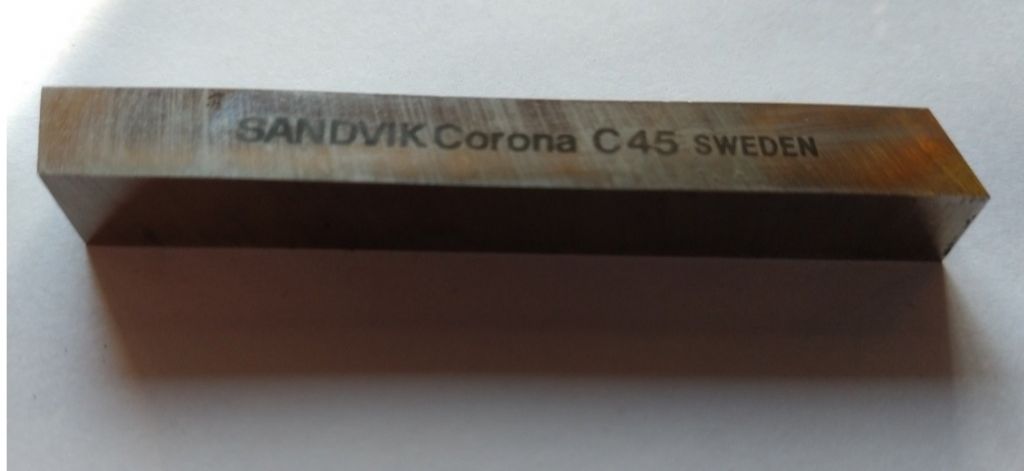Not encouraging to find a 1970s HSS that's no longer made, where none of the identifying numbers come up on an internet search, and Sandvik don't list any alternatives.
I guess C45 went out of production because better and/or cheaper equivalents became available at the time it was on the market. Carbide is likely to have knocked it out because it outperforms HSS by a factor of 5 or more in most manufacturing processes. There's still a place for HSS, but I suspect the really exotic types have all been obsoleted by carbide and materials that outperform carbide.
At the moment the only way to find out whether C45 useful or not is to try it. Possibly the C means it's a Cobalt HSS alloy, giving superior hardness and heat-resistance. If so, it will be good stuff for amateur use unless it's too tough hard for your bench grinder and patience! Bear in mind that a softer HSS is quicker and easier to grind than hard varieties, and the super-dooper stuff may be a PITA to shape and resharpen. Much depends on how good a match tools are to the job in hand, which is why most HSS lathe cutters are mid-range.
Also, please report to the Financial Controller to discuss 'It was cheap so intuition told me to buy now worry later.' Don't expect to be offered coffee, or even a seat!

Please report back on how well C45 behaves. With luck it will be so wonderful you never need to buy any HSS ever again. But don't be surprised if it's more trouble than it's worth. Products that disappear are rarely miraculous.
Dave
SillyOldDuffer.






